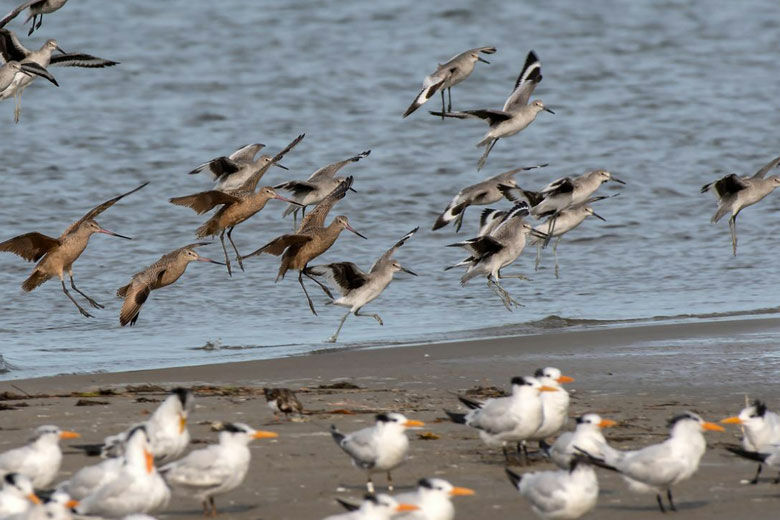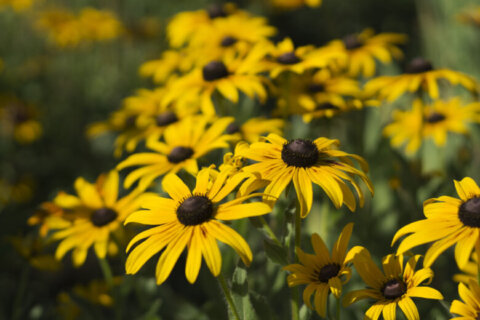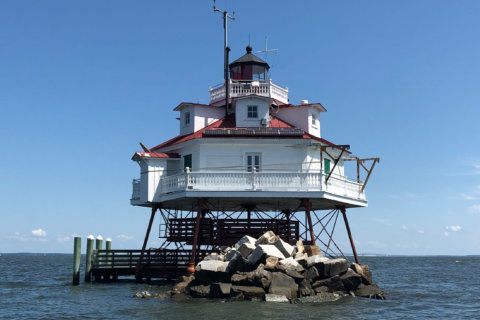
Everyone is searching for a spot on the beach at this time of year, including common terns, whose numbers in Maryland have plummeted since the mid-1980s when there were about 2,500 nesting pairs in the state.
The terns, who are about the size of robins, nest right on sandy beaches, but they’ve faced a growing problem, according to Dave Brinker, an ecologist with the Department of Natural Resources.
“The beaches they use are on small islands in coastal estuaries,” Brinker said. “Most all of those small islands have now disappeared because of erosion and sea level rise.”
So to help out, Maryland’s Department of Natural Resources partnered with the Maryland Coastal Bays Program and built a 48-by-48 foot raft covered in broken clamshells to mimic the conditions of the islands the birds prefer, “and it is working as a super piece of nesting habitat for these common terns,” Brinker said.
And there are hopeful signs, according to Brinker.
Last year at this time, there were zero nests on the platform. This year, the number of nests shot up in just weeks, from four nests mid-month to 91 nests by May 22.
Each nesting pair of terns can produce a clutch of between two to three eggs, Brinker said.
“It takes them about 23, maybe 24 days to hatch,” Brinker said.
So, if all goes well, there could be hundreds of little terns hatching by mid-June.
The bonus of creating the artificial islands for the birds, is that their natural predators don’t seem to have caught on to the presence of the nests. Brinker said great horned owls, raccoons and foxes typically raid the birds’ nests.
“Raccoons can swim over to an island if it’s not too remote,” Brinker said, adding that they treat the nests on the islands like a buffet.
Along with the terns, the platforms may help other birds whose numbers have dropped, including black skimmers and royal terns.
Brinker said maintaining the diversity of the coastal bay is important for the balance of the ecosystem. He added that without intervention, “if you’re out boating and you like different birds, those are three species that you won’t be able to see anymore.”








